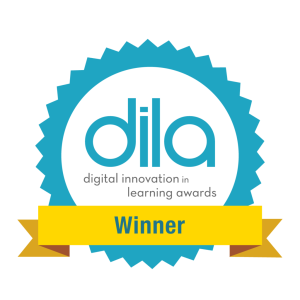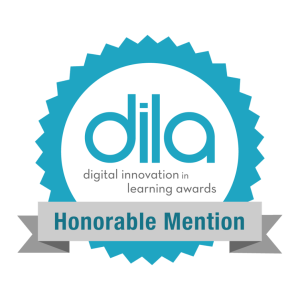Blog Archives
Where Ideas Go to Die
 Image Credit: Pixabay.com
Image Credit: Pixabay.com
Good idea. Bad idea. Things are not always black and white. Even the best ideas (or intentions) can lead to bad things if the culture of a school is not conducive to innovation.
It’s easy to say that we will do what’s best for kids, but more difficult to discern what is actually best when considering the potential impact on different stakeholders. Is research-based best practice the gold standard that we should never deviate from? Or is there room for new and untested ideas in education?
I tend to believe that kids deserve both, and so it pains me to know that there have been times that I’ve been a barrier to innovation. I know that I have made decisions that stifled progress. For example, this past school year one of our teachers approached me with an idea. He wanted to have our entire school (approximately 860 students) meet outside for an all-school photograph to commemorate our 50th anniversary…and he wanted the photo to be taken from a few hundred feet in the air.
I thought the idea of an aerial shot taken from one of our school’s drones sounded cool, but my visceral response was one of hesitancy. I tried to dissuade him because I thought that getting nearly 1,000 people (students and staff) outside at the same time would be too intrusive on teachers’ busy schedules. If I’m being completely honest, I probably also wanted to avoid undue criticism from anyone who was not super excited about the idea.
My perspective was skewed towards protecting the “routine” so we could keep moving forward. After all, what is best for kids is protecting the learning environment and their routine…right?!
Fortunately, the teacher who wanted to add this neat drone video perspective was pretty passionate about the idea. I quickly realized that a school’s 50th anniversary may actually be grounds for disrupting the routine. Long story short, we all met outside and it turned out to be some of the most amazing video footage I’ve ever seen. The best part is that our students are still raving about it.
 Image Credit: Twitter via @GWtechWPS
Image Credit: Twitter via @GWtechWPS
When I stare at the picture above it’s hard for me to distinguish their faces, but I do remember their reactions. They loved it. After watching the drone video they even started to think differently about things. I think we all did. This served as a reminder that there is an opportunity cost to what we say no to. Even if it is under the guise of “what’s best for kids.”
Most people do not wake up in the morning wanting to dash another person’s dreams…oftentimes we do it unknowingly. I pray that “What’s Best for Kids” is not where ideas go to die. I pray that I am not the person who kills them.
–
**Yes! The Adjusting Course blog is moving to a new home. Hop over to www.BradGustafson.com to subscribe to my new “ad free” blog. It will literally only take six seconds…unless your internet is slow…or you type slow…
I’ll keep cross-posting here for another month or so to give everyone a chance to switch over to the new site. (I’d love your feedback on the design too.)
When Worlds Collide
Most people are willing to concede the world is changing for the better. Education is changing. I tend to agree and I also think our students would benefit from some additional urgency and intentionality on our part.
We have opportunities to connect and learn from others that were unfathomable a decade ago. We simply need to accelerate the merger between how ‘school’ has always been done and what it needs to be for our kids.
The evolution of technology has unleashed new levels of learning, creativity, content-creation, and sharing. However, pedagogy has not been as nimble. We have barely begun to scratch the surface of how ‘traditional best-practice’ should co-mingle with the digitally connected age. We need these two worlds to collide.
This week I attended an EdCamp Leadership Conference in Chicago where I co-facilitated a session that delved into this very topic. As part of the session we integrated some quadcopters and robotics, but the primary focus was on learning and connectivity.
The picture below doesn’t begin to describe the depth of the conversations that transpired. However, if you click HERE you can read a reflective piece by Jeff Herb who was also part of the session.
The energy and sense of wonderment in the session were palpable. This had me reflecting on the degree to which we are giving traditional best-practice a ‘free pass.’ Are we more prone to question and criticize new ideas, technology, and innovations than we are to examine the status quo? Sometimes it feels as if past-practice has been placed in a protected vacuum chamber that absolves it from any scrutiny whatsoever.
What if we were able to realize a breakthrough and find a way to merge the digitally connected age with best-practice? What if we created a culture of innovation and risk-taking that made it OK to question things we’ve always done in schools?
Analyzing every inefficiency.
Advocating for students before we thought about maintaining the predictable practices we’ve come to accept as the only way.
How far could we go?
How deep would the learning and relevance be?
What’s the best thing that could happen?
Are you with me?!
True Learner Empowerment
We recently had a couple remote controls from our educational drones drop to the ground resulting in broken joysticks. Accidents happen and we completely understand this, but thanks to our amazing staff and students this is not the end of the story.
An elementary student was empowered to help engineer a new joystick using our school’s 3D printer. She worked with Mr. Hinnenkamp to create a tiny joystick sleeve that fit over the broken drone remote controls using a design program called Tinkercad. Everything works as good as new now, and our students had the opportunity to experience authentic innovation and learner empowerment.
This is precisely why we feel it is critical to put students in the center of their learning (even if it means things get messy or broken every once in a while). Kids have the capacity to innovate, engineer, think critically, and solve a myriad of real problems; they don’t require worksheets to do so! All students deserve the opportunity to work with cutting-edge technology in a safe and supportive learning environment. If the first time students have the opportunity to innovate and invent using real-world tools is high school or college, then we will have failed them.
This is more than a story about drones or a 3D printer. I took the opportunity to speak with the student that helped repair her drone remote control. The pride she exuded when she explained to me how she had fixed something that was accidentally broken was unmistakable. There was a humble confidence that I had not seen before. As we finished chatting I asked her how this experience made her feel and her response literally choked me up…I nearly cried. Suffice it to say, the opportunity she was given to fix her drone remote meant the world to her. And THAT means the world to me.
Thank you, teachers. Thank you for truly empowering our students. I honestly LOVE how our entire team empowers students and supports our kids in learning skills they will need to thrive today and excel tomorrow.
EduDrone Challenge
You might be surprised to learn that your school can purchase a drone for less than $50 dollars! If you’re interested in connecting with other schools that are cultivating critical thinking and creativity using these cutting-edge “quadcopters” this is the blog post for you! Welcome to the “EduDrone Challenge!”
Here’s how it works: Teams of students create a Challenge Course for their drone to maneuver through. Each Challenge Course should feature 4-8 mini-challenges for drones to navigate. Students need to create detailed plans that are drawn to scale, and use precise mathematical terms so that schools across the country can replicate the same Challenge Course design. (Please read the academic standards information below for explicit learning objectives.)
After a team of students has created their Challenge Course plans, they should select a creative theme and write a narrative that describes the Challenge Course in imaginative terms. For example, students that incorporate a hula-hoop as one mini-challenge could describe the hoop as “a black hole that the Drone must jettison through in a distant galaxy.” (Please read the Common Core writing standards below for explicit learning objectives.)
Directions:
- Brainstorm objects for your Challenge Course (i.e. cones, hula-hoops, etc.).
- Develop a detailed plan using graph paper or drawing paper. Click HERE to see a sample plan.
- Be sure to include measurements and the appropriate mathematical terms.
- Select a creative theme and write a narrative describing your team’s Challenge Course.
- Practice navigating your Challenge Course and make adjustments to your detailed plan or narrative as needed.
- Share your classroom or team’s detailed plan and written narrative with other schools. Use the #EduDroneChallenge hashtag on Twitter.
- Try to recreate Challenge Courses from other schools using the detailed plans they create and share.
We will be posting plans and video that our students create in the coming weeks and look forward to connecting with other schools.
Academic Standards Information:
- I can understand fractions in real-world situations by creating a detailed plan for a drone Challenge Course using fractions/percentages, and successfully building the Challenge Course. (Math: Number/Operation 3.1.3.1)
- I can draw a representation of a three dimensional figure, and create an authentic drone Challenge Course that utilizes the same measurements and points represented by my drawing. Each mini-challenge in my Challenge Course represents one vertex or point in the 3D object. (Math: Geometry & Measurement 5.3.1.1)
- I can write a narrative to develop a real or imagined experience using effective technique, well-chosen details, and well-structured event sequences. (Writing: Common Core College & Career Readiness Anchor Standard for Writing)
- I can use technology resources for problem solving, self-directed learning, and extended learning activities. (ISTE Nets & WPS Technology Standards 5, 6)
- I can reflect on and adapt to the ever-changing nature of technology and understand how and why technology works. (WPS Technology Standards C & D)
Additional Resources:
Watch this TED Talk to see the science of drones!
Our school started by purchasing a Parrot AR Drone for about $300, but we are also investing in durable mini-drones for much less.
Connect with @GWtechWPS or @GustafsonBrad with questions!

















